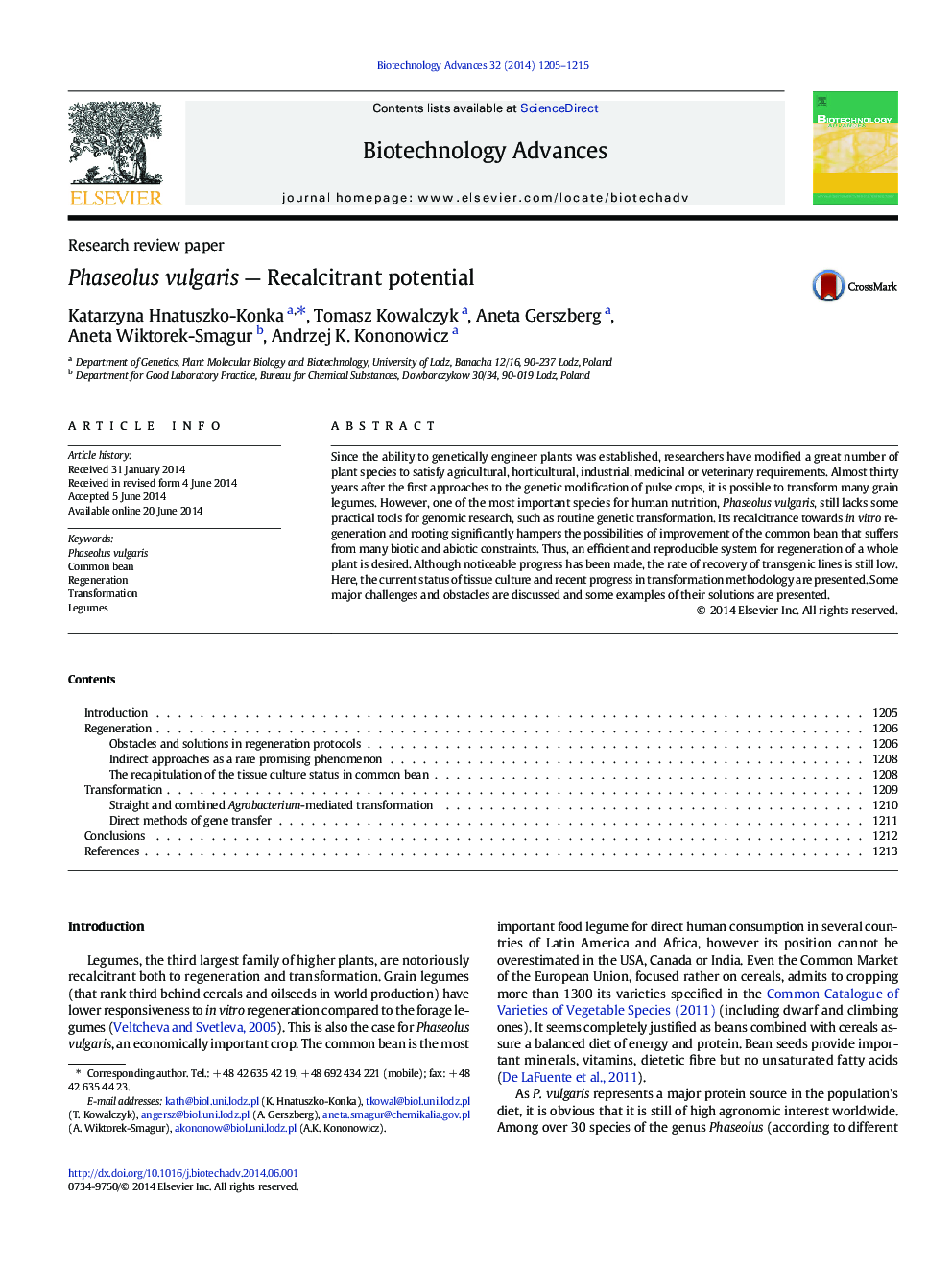| Article ID | Journal | Published Year | Pages | File Type |
|---|---|---|---|---|
| 14243 | Biotechnology Advances | 2014 | 11 Pages |
Since the ability to genetically engineer plants was established, researchers have modified a great number of plant species to satisfy agricultural, horticultural, industrial, medicinal or veterinary requirements. Almost thirty years after the first approaches to the genetic modification of pulse crops, it is possible to transform many grain legumes. However, one of the most important species for human nutrition, Phaseolus vulgaris, still lacks some practical tools for genomic research, such as routine genetic transformation. Its recalcitrance towards in vitro regeneration and rooting significantly hampers the possibilities of improvement of the common bean that suffers from many biotic and abiotic constraints. Thus, an efficient and reproducible system for regeneration of a whole plant is desired. Although noticeable progress has been made, the rate of recovery of transgenic lines is still low. Here, the current status of tissue culture and recent progress in transformation methodology are presented. Some major challenges and obstacles are discussed and some examples of their solutions are presented.
